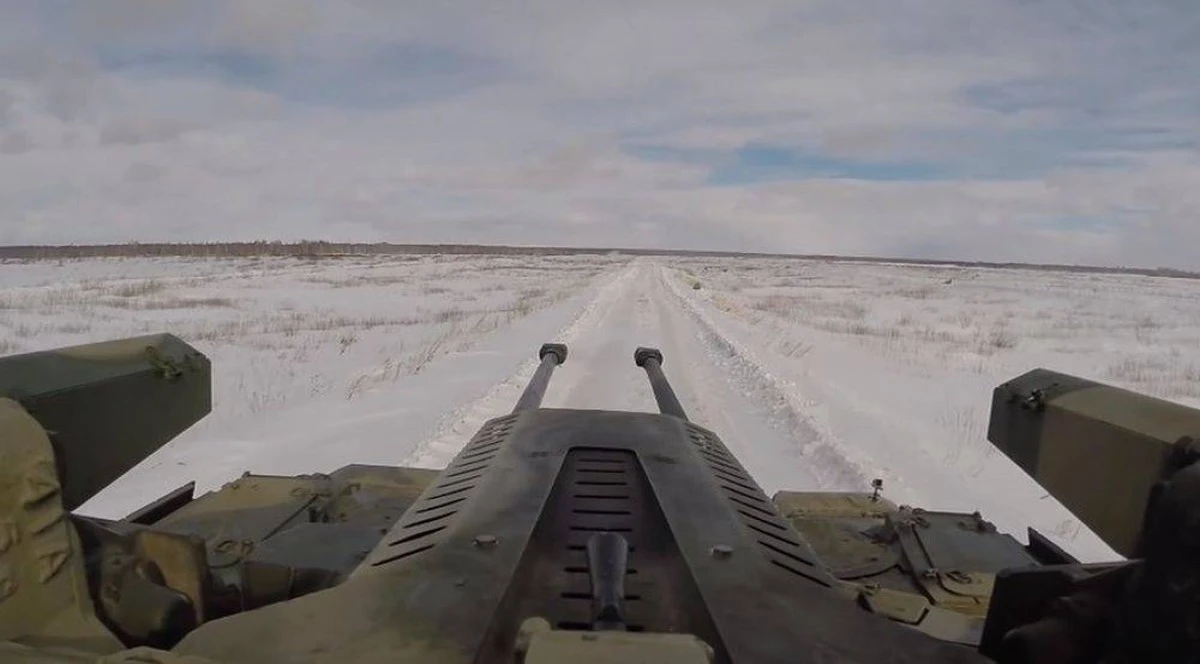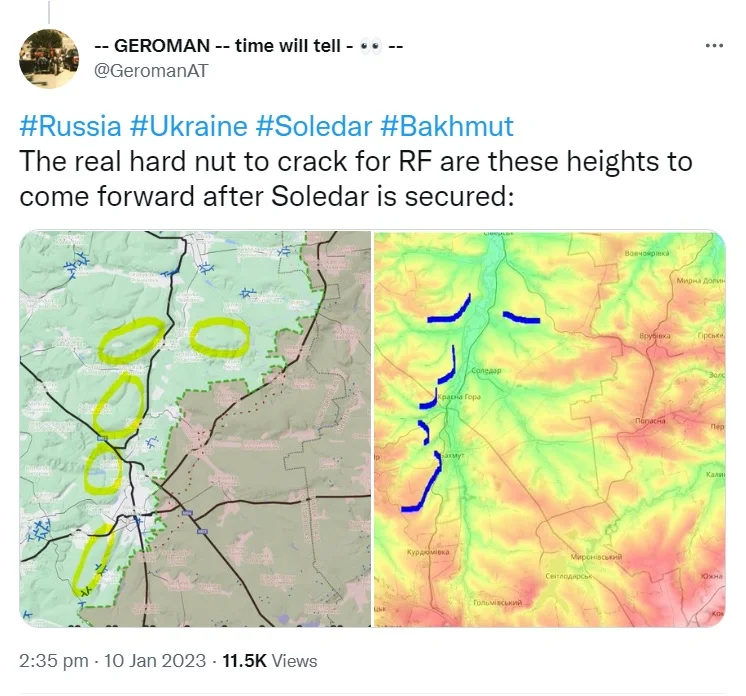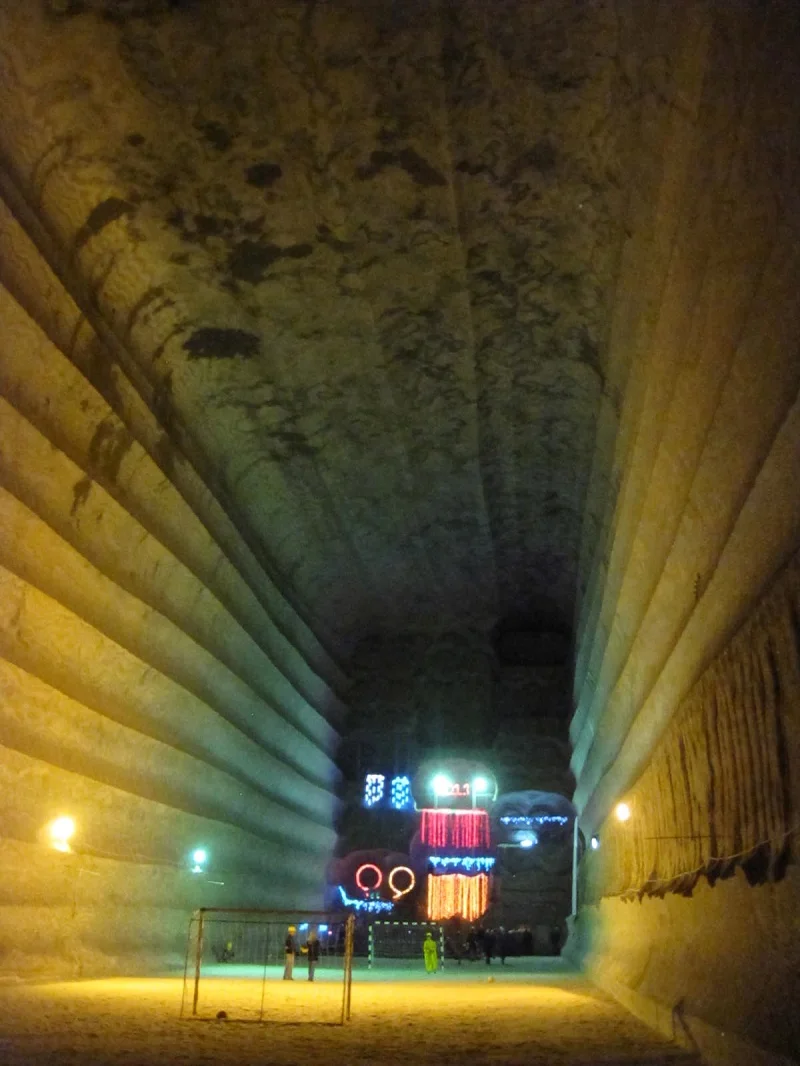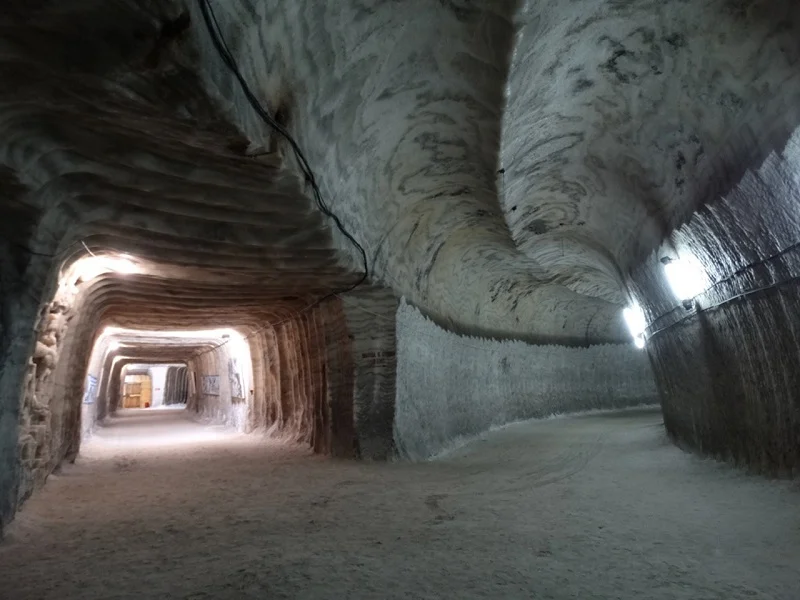A few hours after Ukrainian President Volodymyr Zelensky lauded the resilience shown by his forces in Soledar, the United Kingdom on Tuesday afternoon acknowledged that the Russian forces have made tactical advances into the small Donetsk town in eastern Ukraine and are likely in control of most of the settlement.
Mineral-rich Soledar, meaning ‘the salt giving’, is just 10 km north of the industrial city of Bakhmut, with the region having one of the biggest salt deposits in the world located in deep underground mines.
In its latest intelligence update on the situation in Ukraine, the United Kingdom’s Defence Ministry on Tuesday afternoon said that the capture of Bakhmut likely continues to be Russia’s main immediate operational objective.
It said that Russia’s Soledar axis is highly likely an effort to envelop Bakhmut from the north, and to disrupt Ukrainian lines of communication.

“Part of the fighting has focused on entrances to the 200 km-long disused salt mine tunnels which run underneath the district. Both sides are likely concerned that they could be used for infiltration behind their lines,” the UK Defence Ministry said in its update today.
It also added that, despite the increased pressure on Bakhmut, Russia is unlikely to envelop the town imminently because Ukrainian forces maintain stable defensive lines in depth and control over supply routes.
It was just before Christmas that the Ukrainian President toured the “tattered but unconquered” region and presented state awards to “heroes” who he said defended not only “Bakhmut fortress” or Donbas but the whole of Ukraine.
The western part of Soledar and the last road on which it is still possible to leave the city. pic.twitter.com/D22JsNrU0u
— AZ
(@AZgeopolitics) January 10, 2023
On Monday, after holding negotiations with the Prime Ministers of Czech Republic, Portugal, North Macedonia and President of Slovenia, Zelensky held a meeting with his Commanders and chief of intelligence on the situation in the Donetsk and Luhansk regions – areas he said are the “hottest now.
“It is extremely difficult – there are almost no whole walls left… Due to the resilience of our warriors there, in Soledar, we have gained additional time and additional power for Ukraine,” Zelensky said in his regular night video address to the nation.
 Meanwhile, the Soledar city military administration continued the evacuation of the population to safer regions of Ukraine, insisting that it is anyways “extremely dangerous” to stay in the Donetsk region in the absence of gas and due to power outages in the most difficult and coldest winter.
Meanwhile, the Soledar city military administration continued the evacuation of the population to safer regions of Ukraine, insisting that it is anyways “extremely dangerous” to stay in the Donetsk region in the absence of gas and due to power outages in the most difficult and coldest winter.

Ever since 1701, when salt miners built a wooden fortress that occupied the centre of the modern city, Bakhmut and Soledar, situated at a distance of about 755 km from the capital Kyiv, became the centre of the salt industry in the southeast of Ukraine.
By 1885, just six years after Franco-Belgian and France-German joint-stock companies started their construction, the Bakhmut salt mines started providing 70% of the national salt production.
Over the years, manual labour was replaced by mining equipment, because salt was extracted using the same method as black gold – coal.
The salt mine in Soledar, where a speleological sanatorium has been created, also has unique natural healing properties.
In November 2021, the Ukrainian state enterprise Artemsil, also the largest salt production enterprise in Europe, opened a new route titled ‘Salt Extravaganza’ taking tourists to a salt mine located at a depth of 288 metres, at the bottom of a real ancient sea.

It is said that, as a result of more than 100 years of underground work, a system of workings with a length of over 200 kilometers was formed in the thickness of the earth.
Also Read: Uzbekistan connects with the West through a new rail route

























